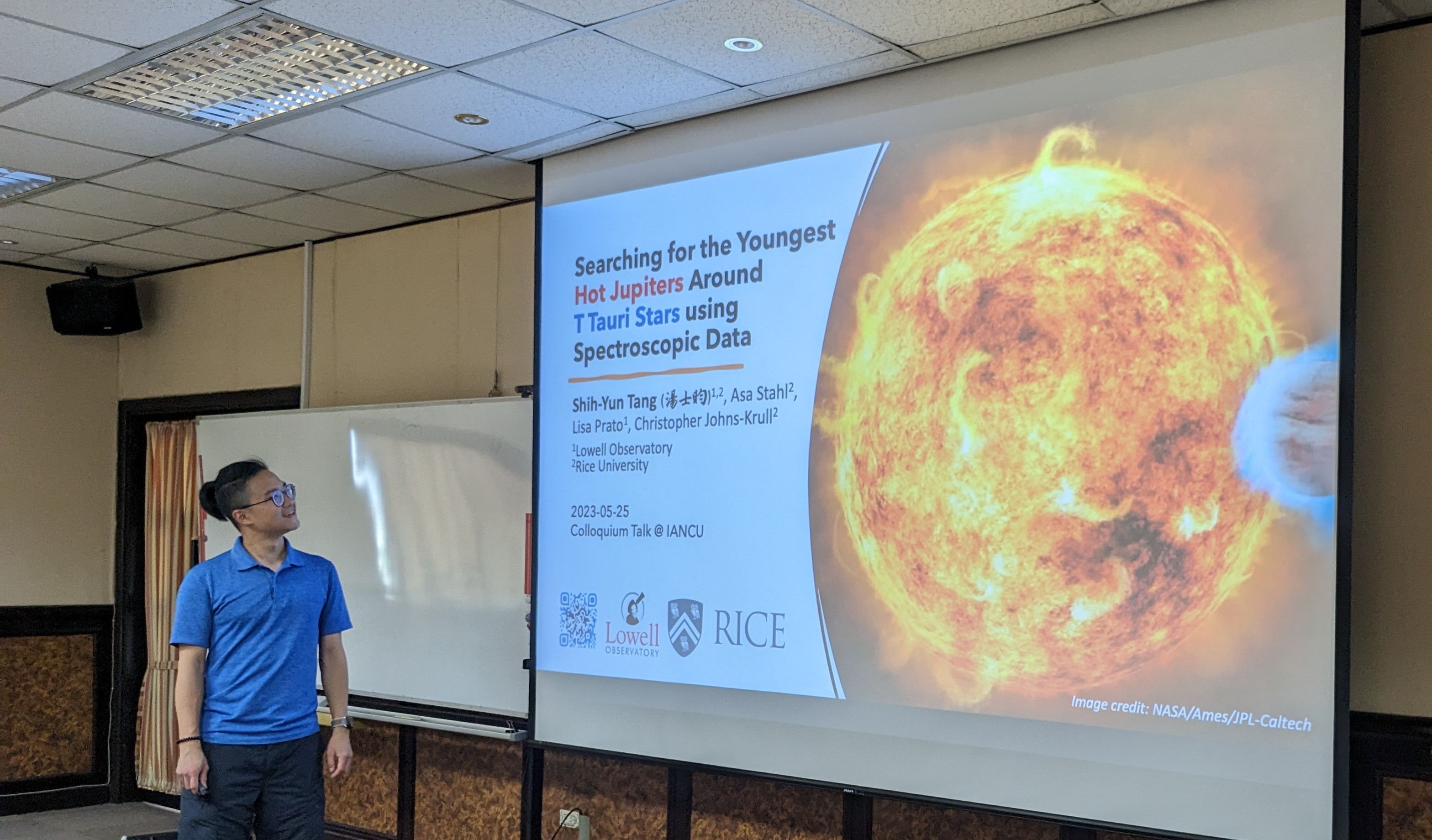Mr. Shih-Yun Tang (Rice Univ./Lowell Observatory)

"Searching for the Youngest Hot Jupiters Around T Tauri Stars using Spectroscopic Data"
時間/地點: 2023-05-26 14:00 [S4-1013]
摘要:
The best way to understand planet formation is to study planets while they are still forming. Planetary systems that host hot jupiters (HJs) are especially intriguing because of HJs' large sizes and peculiar short orbital periods. Moreover, the formation history of hot jupiters may inhibit the development of habitable worlds. Searching for HJs around pre-main sequence stars using the radial velocity (RV) method, however, is challenging because of the strong stellar activity of the host star. Large cool spots (as large as 80% of the visible disk) can overwhelm and mimic RVs induced by planets. The Gaussian Process Regression (GPR) technique has been used widely to isolate the RV signal produced by the stellar activity; still, prior knowledge of the stellar rotation period, spot(s) lifetime, and spot(s) variability period are essential for GPR to model the activity signal properly. Knowing these stellar properties is even more critical for applying GPR to young stellar systems where the RV signal from the extreme stellar activity can be several times larger than the RV signal of the planet.
Here, I will show the recent development and highlights from our Young Exoplanets Spectroscopic Survey (YESS) team. This includes the RV pipeline for the IGRINS spectrograph, the re-discover of the sub-stellar companion to DITau, a new method using the OH/Fe equivalent width ratio to trace the spot variability of T Tauri stars, and a simulation tool that can reproduce the observed periodicity in the OH/Fe equivalent width ratio and the radial velocity.
回上一頁
